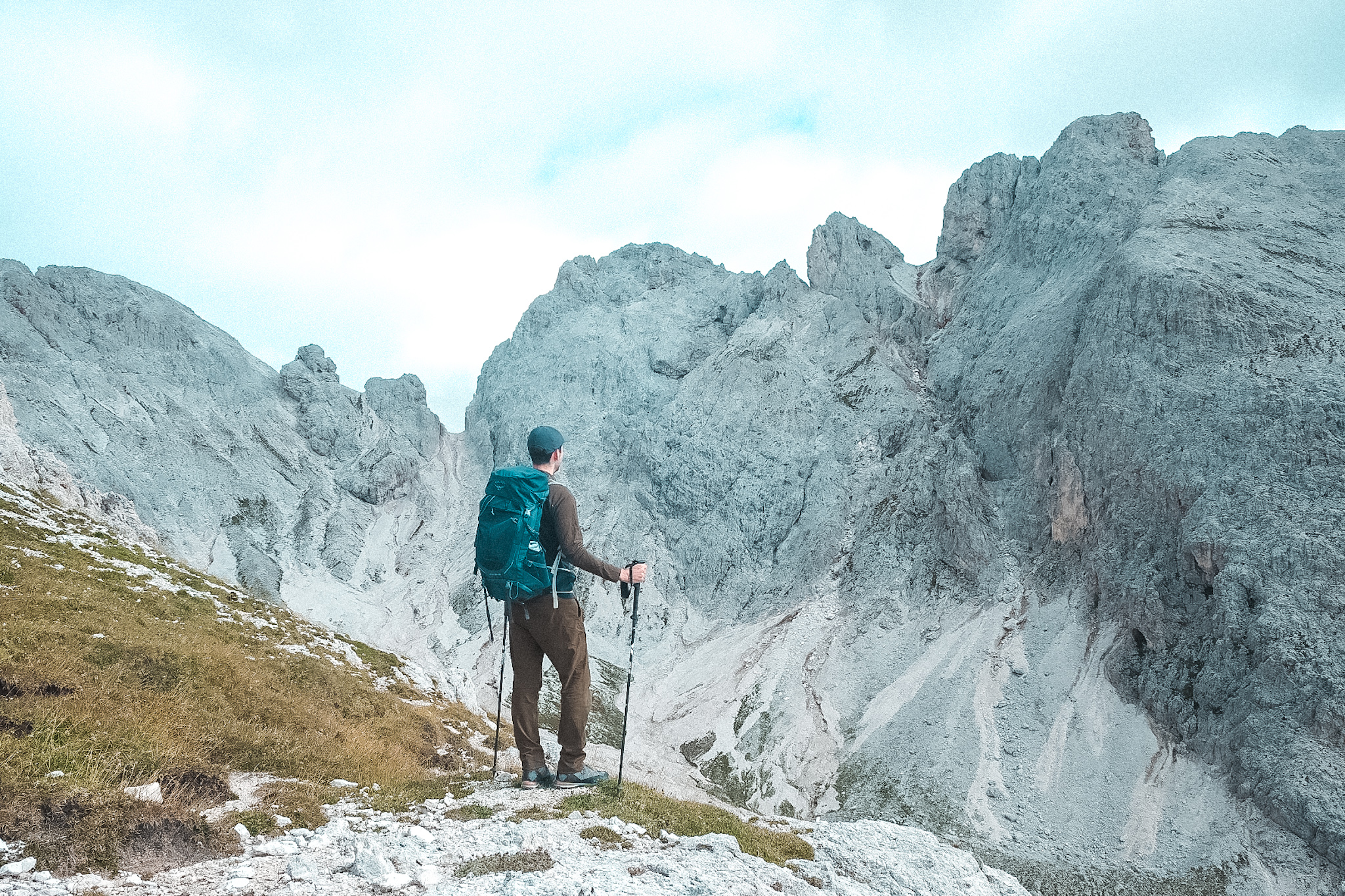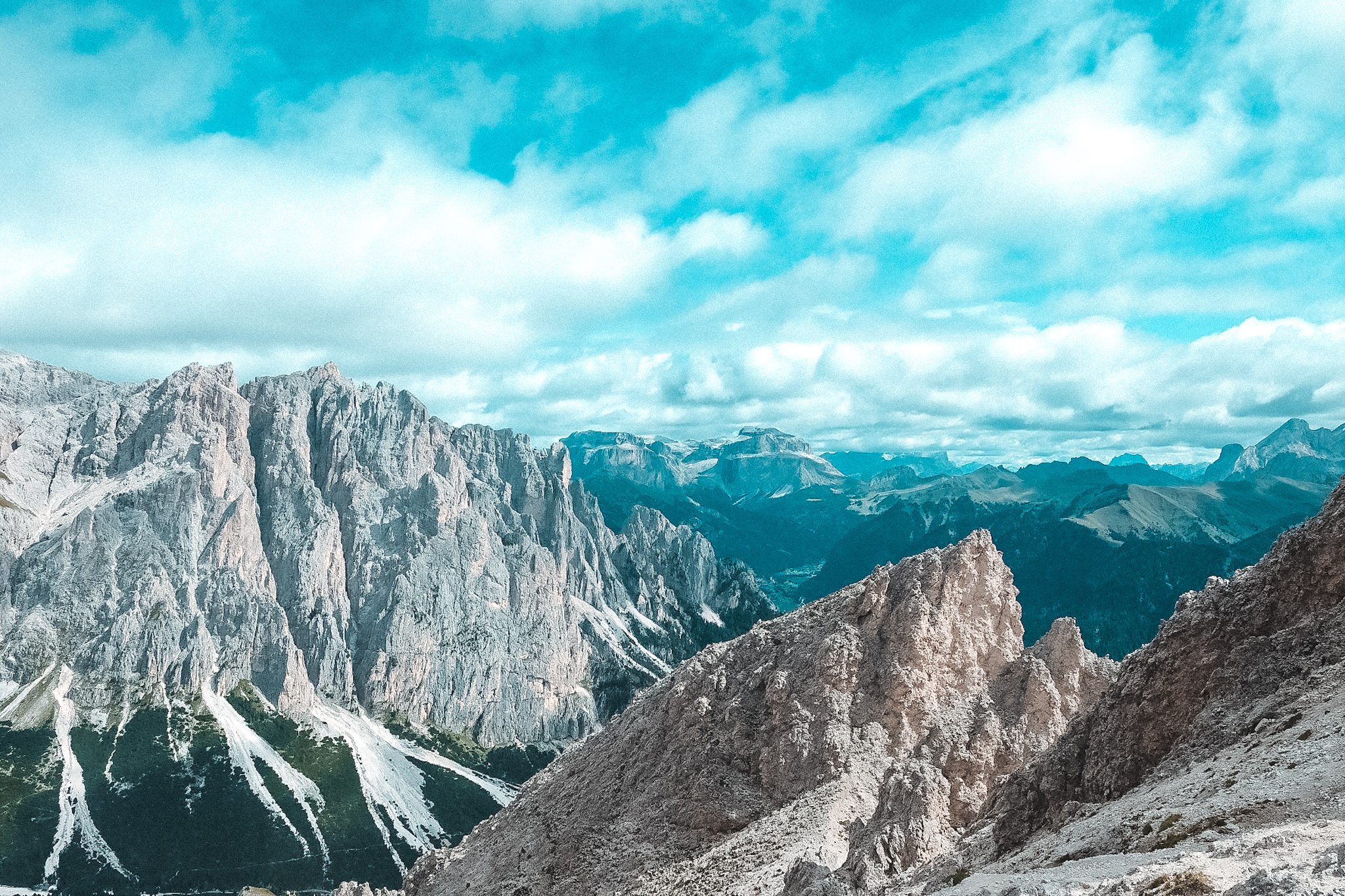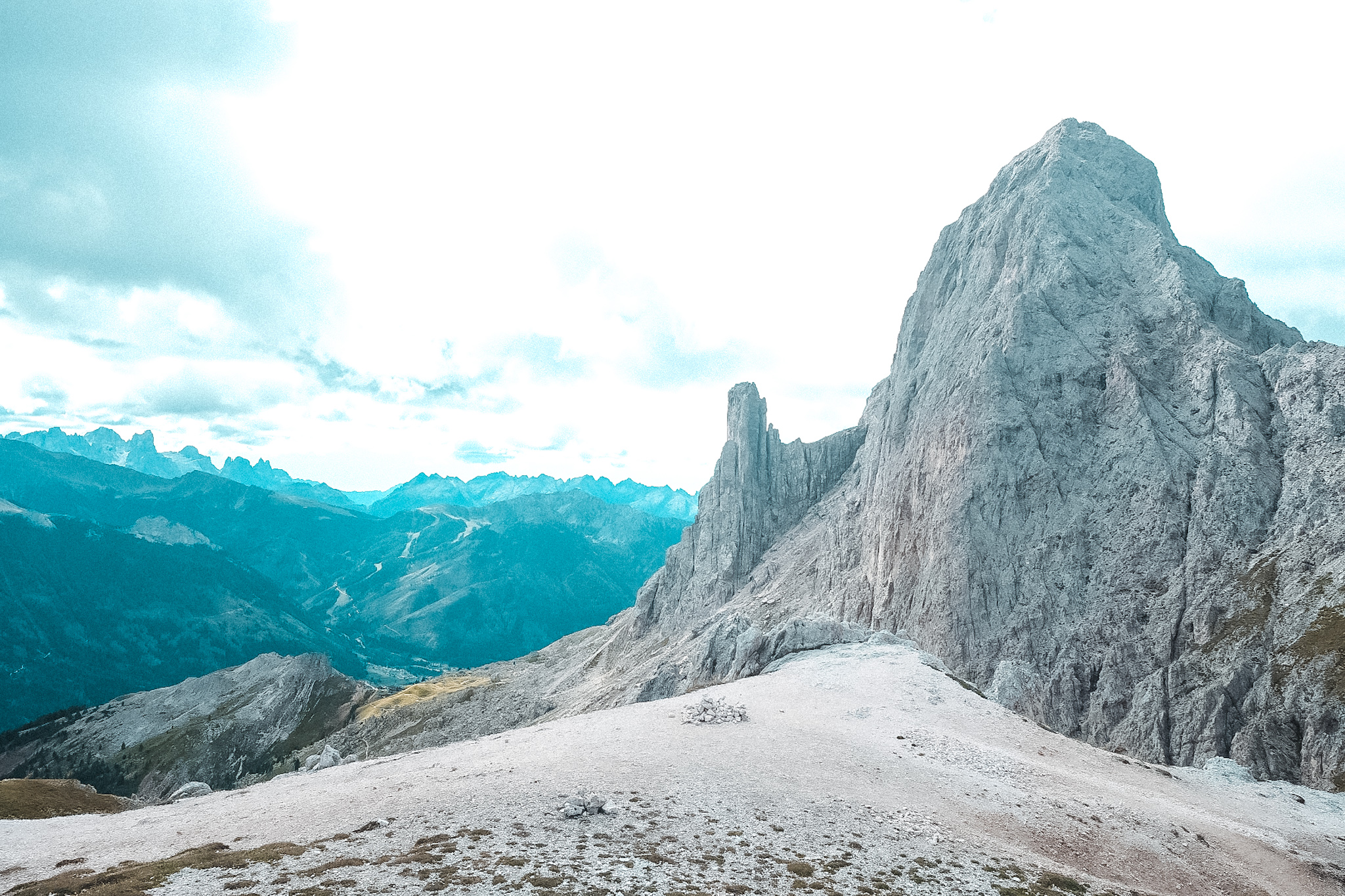The view is quickly lost among the jagged profiles of the Dolomites in the Catinaccio group. It’s a cool morning, the sky slightly overcast, and the crisp mountain air wraps around us as we step into Rifugio Paolina—the starting point of a hike promising stunning scenery and a touch of adrenaline.
We’re in Val d’Ega, near Passo Costalunga, the mountain pass that links the Trentino’s Val di Fassa with South Tyrol.
From Rifugio Paolina (2,125 m), we follow trail no. 552, which is well-marked and easy to follow, leading towards Rifugio Coronelle. The path winds along the edge of small woodlands, and for most of the route, it traverses a steep grassy slope, hugging the base of the dramatic rock face of the Catinaccio.
Or more precisely, it skirts the edge of the ancient Triassic reef that forms part of the Sciliar-Catinaccio massif—a geological remnant of a prehistoric sea, now standing tall in the heart of the Dolomites.


We walk at a relaxed pace, with the silhouette of the Latemar Dolomites trailing behind us. A detour onto trail no. 9 leads us into an even more dramatic landscape, where jagged rock formations dominate the scene. The terrain becomes steeper, our breathing shortens, and the cliffs of the Catinaccio begin to close in around us like the wings of a theatre stage.
We start to climb the scree slope at the foot of the Roda di Vael, which looms over the path in all its majestic presence. We soon reach the rocky basin that precedes the final ascent towards Passo Vajolon (2,560 m). The path here is completely surrounded by stone, creating an incredibly scenic setting—classic of the Dolomites and their dramatic beauty.
A fixed cable and a small ladder mark the most technical—but also the most captivating—section of the route. Here, we truly appreciate the support of our Rubus trekking poles, which offer outstanding ergonomics thanks to the rear tail of the grip that improves handling, even in more demanding situations. They’re also ultra-light and easy to fold away, making them simple to stow in your backpack during the more exposed sections.
A few ladders—first wooden, then metal—assist us along the way. In these parts, a steady and confident step is essential.


Every step is a deep breath; every glance downward, a plunge into emptiness and beauty. Then, all at once, Passo Vajolon opens up before us like a terrace suspended between sky and stone. We reach the saddle of the pass and can do nothing but look eastwards, taking in the endless Dolomite panorama stretching towards the Marmolada and the Pale di San Martino—the same breathtaking view that hides each morning behind the rocky skyline we admire from the city below.
The descent towards Rifugio Roda di Vael (2,283 m) is a journey through scree slopes and silence. The trail winds its way between Dolomite towers and hidden valleys, offering a truly scenic stretch where we pass spires and stone pinnacles before joining the comfortable trail no. 541. This leads us into the final panoramic section before reaching Rifugio Roda di Vael.
To complete the loop, we follow trail no. 549. The terrain softens, alpine meadows return to dominate the landscape. In less than half an hour, we find ourselves back at Rifugio Paolina, completing the circular route. A short hike, but one that is remarkably intense—varied, exhilarating, and especially captivating in its rocky grandeur.
And so, back at the rifugio, a pause is essential. The wind blows gently, the mind quietens, and the gaze drifts—lost between clouds and stone.
